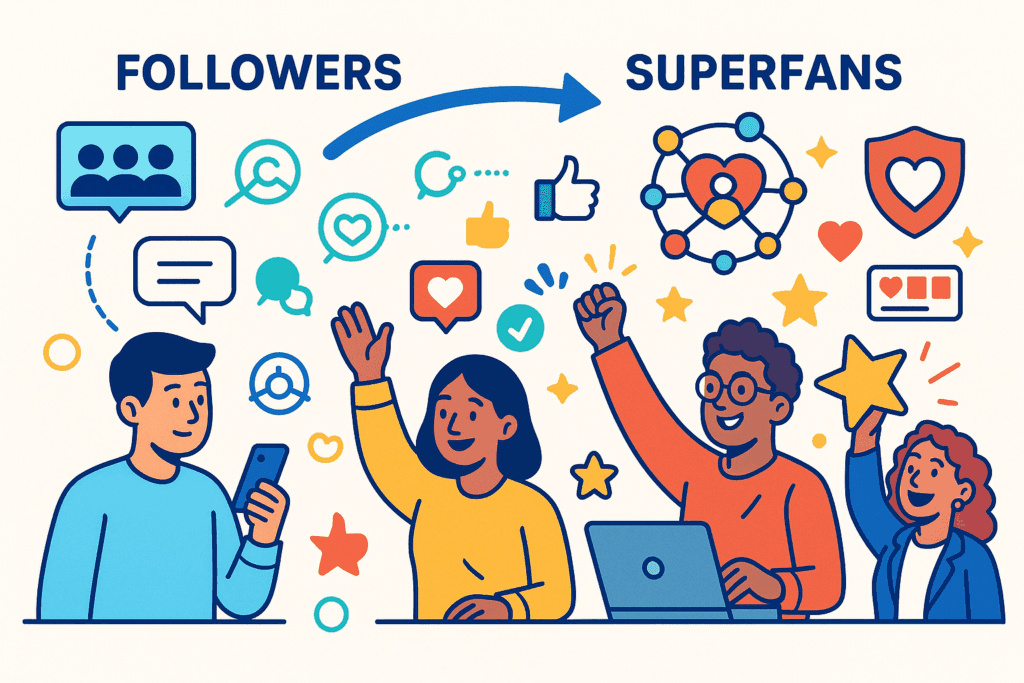The Rise of Advocate Community Platforms: How Brands Are Turning Followers into Superfans

In 2025, consumer attention is fragmented, acquisition costs are rising, and loyalty level is elusive. Brands can no longer rely solely on awareness, impressions and followers-they need connection.
This is where advocate community platforms come into play.
More than just a trend, they represent a tectonic shift in brand strategy-from broadcast to belonging, from reach to peer-powered resilience. This expanded guide offers a 360° blueprint for understanding, designing, launching, and growing your own branded fan marketing ecosystem.
1. What Is a Advocate Community Platform? (And Why It's Not Just Another Social App)
What It Is-and What It Isn't
A advocate community platform is more than a fan page, or subreddit. It is a structured, brand-owned, high-intent environment where your most engaged audience gathers to share, create, learn, and champion.
It's designed around purposeful interaction, not passive consumption.
Core Attributes of a Advocate Community Platform
Brand Ownership: Full control over data, layout, governance, and monetization.
Themed Interaction: Organize content by threads, hashtags, or quests-not just a chaotic feed.
Fan-Driven Value Creation: Peer reviews, tutorials, live events, memes, and more-all created by the community.
Interoperability: Sync with Shopify, CRM, email platforms, referral systems, and first-party data layers.
Comparison to Social Media
In essence, social media borrows attention. Fan platforms build it.
2. Why Fan Communities Are a Strategic Imperative in 2025
Trends Forcing the Shift
Rising CAC Across Platforms: CPMs have doubled on Meta and TikTok since 2022.
Cookie Collapse: As third-party tracking dies, brands need consensual, self-reported data-community is the best source of ZPD (zero-party data).
Algorithm Unpredictability: Every new platform change (e.g., Meta Threads, TikTok Shop) shifts the goalposts.
Shift from Transaction to Tribe: According to GWI, Gen Z ranks "community belonging" as a top reason for brand preference.
Strategic Advantages of Fan Communities
Retention Engine: Community members have 20-80% higher LTV across verticals (Commune Report, 2025).
Referral Flywheel: Advocates refer 2.3x more often than average customers.
Innovation Pipeline: Real-time feedback shortens product development cycles.
Owned Data Layer: Behavior, sentiment, loyalty signals-all structured and exportable.
3. Choosing the Right Advocate Community Platform: What to Look For
Your Platform Must Match Your Brand DNA
Before choosing a platform, ask:
Is my community conversation-first or content-first?
Do I prioritize gamified engagement, content layering, or referral loops?
How technical is my team-and how quickly do we want to launch?
Deeper Feature Evaluation Criteria
Extended Comparison: Top Platforms in 2025
Pro Tip: Run a 1-week trial with real fans before scaling. Evaluate not just tech but vibe.
4. Designing a Advocate Community That Actually Works
Design = Outcomes + Belonging
Too many brands launch a community with no scaffolding. Success requires:
Behavior Design
Emotional Architecture
Technical Infrastructure
4-Step Community Design Framework
1. Define the Core Purpose
Example: "We exist to turn sneaker collectors into product collaborators."
This influences every UX decision: channel naming, member roles, reward types, etc.
2. Architect the First 30 Days
Day 1: Personalized welcome
Day 3: Mission invitation
Day 7: Social proof moment ("Top 10 Fan Friday")
Day 14: Recognition mechanic (badge/unlock)
Day 30: Referral ask or product beta
3. Create Rituals
Weekly events, "Welcome Wednesdays," or "Fan Poll Fridays" give rhythm.
4. Enable and Train Moderators
Use community members to enforce norms and set tone.
5. Monetization and ROI: Communities That Pay Off
Direct Revenue Paths
Referral Tracking: Use embedded links inside fan posts.
UGC Licensing: Pull posts into ad creatives with opt-in policies.
Premium Tiers: Offer gated content, early drops, or AMA access.
Product Co-creation: Charge for submission rights to product contests.
Indirect ROI: The Flywheel Model
Community fuels:
Retention → increases order frequency
Referral → lowers CAC
Content → lowers paid media costs
Measurement Framework: 4-Lens Scorecard
Engagement Posts per user/month
Participation on mission-based threads
Event RSVP rates
Business Impact Retention delta (community vs. non)
NPS change post-join
Referral purchase volume
Sentiment Positive:negative comment ratio
Qualitative quotes ("This is the only brand I…")
Operational Time to first post
% automated vs. manual moderation
Community manager hours per 100 members
🎯 Transform your brand from transactional to tribal.
Commune is the advocate community platform trusted by modern D2C teams and trusted by number of brands.-Commune helps you:
Turn customers into advocates
Power referral flywheels
Own your data, your message, and your momentum
Tags:
Ready to Build Your Community?
Discover how Commune can help you create an engaged community that drives business results.
Get Started

